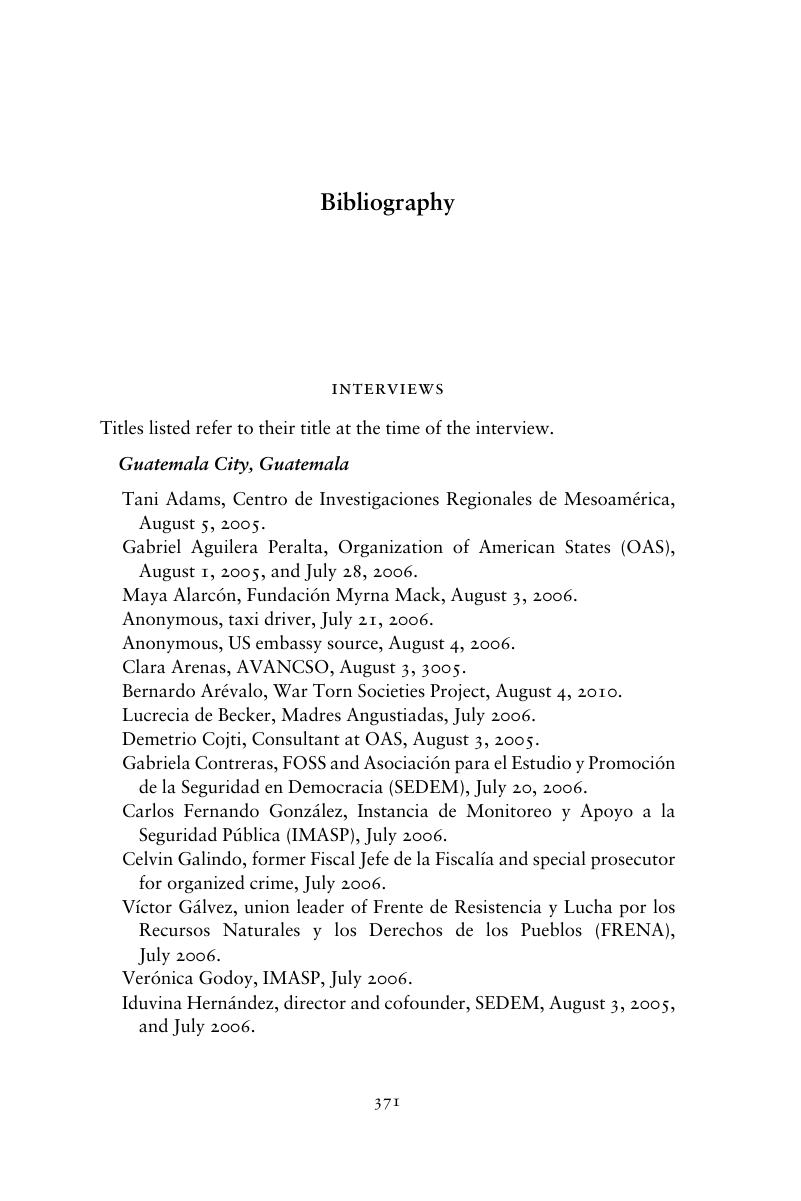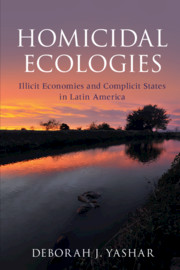Book contents
- Homicidal Ecologies
- Cambridge Studies in Comparative Politics
- Homicidal Ecologies
- Copyright page
- Dedication
- Contents
- Figures and Tables
- Acknowledgments
- Part I Introduction
- Part II The Argument about Homicidal Ecologies
- Part III Divergent Trajectories
- Part IV Looking Backward and Forward
- Bibliography
- Index
- Other Books in the Series (continued from page ii)
- References
Bibliography
Published online by Cambridge University Press: 23 November 2018
- Homicidal Ecologies
- Cambridge Studies in Comparative Politics
- Homicidal Ecologies
- Copyright page
- Dedication
- Contents
- Figures and Tables
- Acknowledgments
- Part I Introduction
- Part II The Argument about Homicidal Ecologies
- Part III Divergent Trajectories
- Part IV Looking Backward and Forward
- Bibliography
- Index
- Other Books in the Series (continued from page ii)
- References
Summary

Information
- Type
- Chapter
- Information
- Homicidal EcologiesIllicit Economies and Complicit States in Latin America, pp. 371 - 398Publisher: Cambridge University PressPrint publication year: 2018
